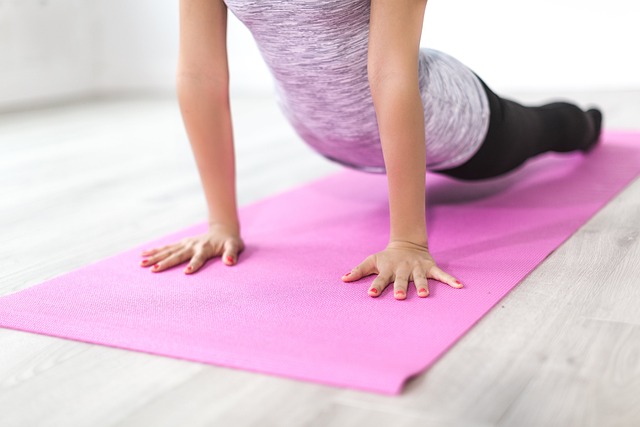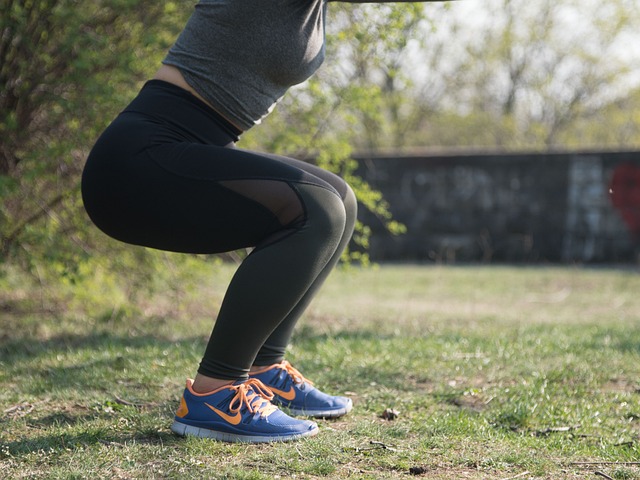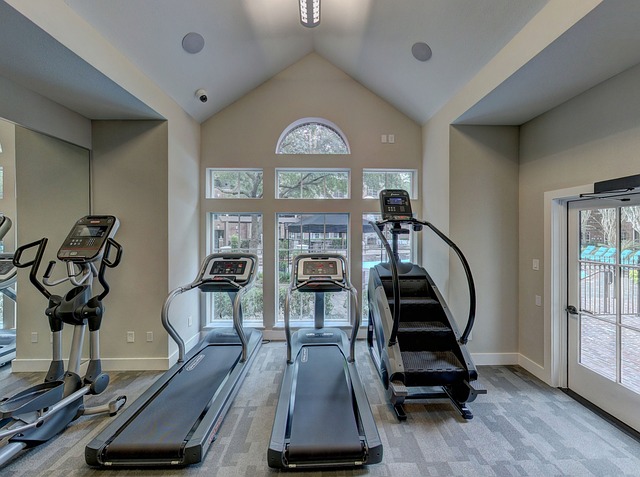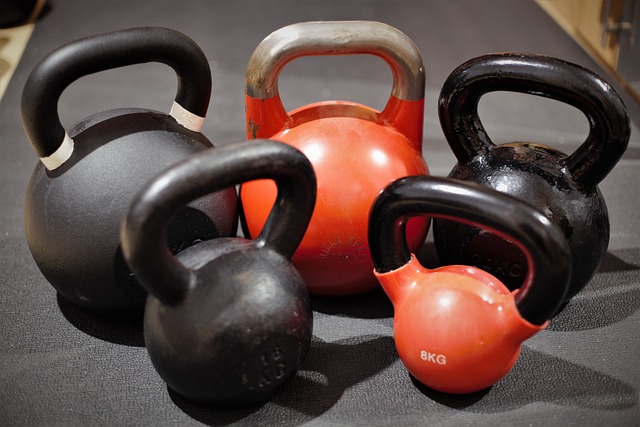Welcome to The Ultimate Guide To Bodyweight Exercises: No Equipment Workouts! In an era where convenience is key, bodyweight exercises have become a cornerstone of fitness routines worldwide. These exercises leverage your own body weight to provide resistance, making them incredibly effective and versatile.
Imagine the freedom of being able to work out anytime, anywhere—no need for a gym membership or expensive equipment. Whether you’re at home, in a park, or traveling, bodyweight exercises offer unparalleled flexibility and accessibility.
In this comprehensive guide, we will explore:
- The convenience and benefits of bodyweight exercises
- Effective warm-up routines to get you started
- A variety of upper body, lower body, and core exercises
- A complete full-body workout plan
- Essential cool-down exercises to prevent muscle soreness
By the end of this article, you’ll be equipped with all the knowledge you need to incorporate bodyweight exercises into your daily routine. Let’s get started on this journey to a fitter, healthier you!
Why Choose Bodyweight Exercises
Bodyweight exercises have rapidly gained popularity, and for good reason. These exercises are not only highly effective but also incredibly convenient and accessible. Let’s delve into why bodyweight exercises should be a staple in your fitness routine.
Convenience and Accessibility
One of the greatest advantages of bodyweight exercises is their convenience. You don’t need a gym membership, fancy equipment, or even a lot of space. Whether you’re at home, in a hotel room, or at a local park, you can perform these exercises anytime, anywhere. This flexibility makes it easier to stay consistent with your workouts, which is key to achieving long-term fitness goals.
Consider this: According to a study published by the National Institutes of Health, individuals who engage in regular physical activity, regardless of location, are more likely to maintain a healthy lifestyle. Source.
Versatility and Variety
Bodyweight exercises are incredibly versatile. They can be modified to suit any fitness level, from beginner to advanced. Here are just a few examples of the wide range of exercises you can perform:
- Upper body: Push-ups, dips, and handstands
- Lower body: Squats, lunges, and calf raises
- Core: Planks, mountain climbers, and leg raises
This variety ensures that you can target different muscle groups and keep your workouts fresh and engaging. Plus, you can easily adjust the intensity by changing the number of reps, sets, or the exercise variation.
Benefits of Using Your Own Body Weight for Resistance
Using your own body weight for resistance training has numerous benefits. Here are a few key points:
| Benefit | Description |
| Improved Functional Strength | Bodyweight exercises often mimic natural movement patterns, helping to improve your overall functional strength. |
| Enhanced Balance and Coordination | Many bodyweight exercises require balance and coordination, which can enhance your overall athleticism. |
| Reduced Risk of Injury | Without heavy weights, there’s a lower risk of injury, making these exercises safer for people of all fitness levels. |
| Cost-Effective | No need for expensive gym memberships or equipment. All you need is your body! |
Incorporating bodyweight exercises into your routine can lead to significant improvements in strength, flexibility, and overall fitness. With so many benefits and so few barriers, it’s easy to see why these exercises are a popular choice for people around the world.
Warm-Up Exercises
Before diving into your bodyweight workout, it’s crucial to properly warm up your muscles and joints. A good warm-up not only prepares your body for the physical demands of exercise but also significantly reduces the risk of injury. Let’s explore the importance of warming up, some effective dynamic warm-up exercises, and how to customize your warm-up to match your fitness goals.
Importance of Warming Up Before a Workout
Warming up is an essential part of any workout routine. It helps to:
- Increase blood flow: A proper warm-up boosts circulation, delivering more oxygen and nutrients to your muscles.
- Enhance flexibility: Stretching and dynamic movements improve the flexibility of your muscles and joints.
- Reduce injury risk: Gradually increasing your heart rate and warming up your muscles can prevent strains and sprains.
- Improve performance: A good warm-up can enhance your overall workout performance by preparing your muscles and nervous system for physical activity.
According to the American Heart Association, a proper warm-up can help you avoid injuries and make your workout more effective. Source.
Suggestions for Dynamic Warm-Up Exercises
Dynamic warm-up exercises are a great way to get your body ready for action. Unlike static stretching, dynamic exercises involve movement, which helps to increase your heart rate and loosen up your muscles. Here are some effective dynamic warm-up exercises:
- Jumping Jacks: A classic warm-up exercise that gets your heart pumping and engages your entire body.
- Arm Circles: Rotate your arms in both directions to warm up your shoulders and upper body.
- Leg Swings: Swing your legs forward and backward to loosen up your hip flexors and hamstrings.
- High Knees: Jog in place while lifting your knees as high as possible to engage your core and legs.
- Torso Twists: Twist your torso from side to side to warm up your core and lower back.
Tips for Customizing a Warm-Up Based on Personal Fitness Goals
Customizing your warm-up can make it more effective and relevant to your specific fitness goals. Here are some tips to help you tailor your warm-up:
| Fitness Goal | Custom Warm-Up Tips |
| Improve Cardiovascular Endurance | Incorporate more aerobic movements like jogging in place, butt kicks, and high knees. |
| Increase Strength | Focus on dynamic stretches and movements that target the muscles you plan to work on, such as arm circles for upper body workouts or leg swings for lower body workouts. |
| Enhance Flexibility | Include dynamic stretches that improve flexibility in key areas, like hip circles and walking lunges. |
Remember, a good warm-up should last about 5-10 minutes and gradually increase in intensity. By tailoring your warm-up to your fitness goals, you can ensure that your body is adequately prepared for the workout ahead.
Upper Body Exercises
Building a strong upper body doesn’t require a gym membership or fancy equipment. With bodyweight exercises, you can effectively target your arms, chest, and back from the comfort of your own home. Let’s dive into some of the best bodyweight exercises for your upper body, discuss proper form, and provide tips on how to progress and challenge yourself.
Bodyweight Exercises for the Arms, Chest, and Back
Here are some highly effective bodyweight exercises to strengthen your upper body:
- Push-Ups: A staple in any bodyweight workout, push-ups target the chest, shoulders, and triceps. Start in a plank position with your hands shoulder-width apart. Lower your body until your chest nearly touches the floor, then push back up to the starting position.
- Tricep Dips: Use a sturdy chair or bench for this exercise. Place your hands on the edge, fingers facing forward, and extend your legs out in front of you. Lower your body by bending your elbows until they’re at about a 90-degree angle, then push back up.
- Plank-to-Push-Up: Begin in a forearm plank position. Push up onto your hands one at a time, transitioning into a high plank, then lower back down to your forearms. This exercise works your chest, shoulders, and core.
- Inverted Rows: If you have a sturdy table or bar, you can perform inverted rows by lying underneath it and pulling your chest up to the edge or bar. This exercise primarily targets the back and biceps.
- Handstand Push-Ups: For a more advanced upper body exercise, try handstand push-ups against a wall. This challenging move targets the shoulders and triceps.
Proper Form and Technique
Maintaining proper form is crucial to maximize the effectiveness of your workouts and prevent injuries. Here are some tips for each exercise:
| Exercise | Form Tips |
| Push-Ups | Keep your body in a straight line from head to heels. Avoid letting your hips sag or raising them too high. |
| Tricep Dips | Keep your elbows close to your body and avoid flaring them out. |
| Plank-to-Push-Up | Engage your core to keep your body stable and avoid rocking side to side. |
| Inverted Rows | Keep your body in a straight line and pull your chest to the bar or table edge. |
| Handstand Push-Ups | Ensure your hands are shoulder-width apart and maintain a controlled movement throughout the exercise. |
Tips on How to Progress and Challenge Yourself
To continue making gains and avoid plateaus, it’s essential to progressively challenge yourself. Here are some ways to do so:
- Increase Reps: Gradually increase the number of repetitions you perform for each exercise.
- Change Tempo: Slow down the tempo of your movements to increase time under tension, or add explosive movements like clap push-ups.
- Try Variations: Incorporate different variations of each exercise, such as diamond push-ups for more tricep engagement or decline push-ups to target the upper chest.
- Add Isometric Holds: Include isometric holds in your routine, like pausing at the bottom of a push-up, to build strength and endurance.
- Combine Exercises: Create compound movements by combining two exercises, such as a push-up to plank-to-push-up sequence.
By incorporating these exercises and tips into your routine, you’ll be well on your way to building a strong and defined upper body. Remember, consistency and proper form are key to achieving your fitness goals.
Lower Body Exercises
Strengthening your lower body is essential for overall fitness and functional movement. The best part? You don’t need any equipment to build strong, toned legs and glutes. In this section, we’ll explore a variety of effective bodyweight exercises for your lower body, discuss variations for different fitness levels, and highlight the importance of including these exercises in your workout routine.
Bodyweight Exercises for the Legs and Glutes
Here are some powerful bodyweight exercises to target your legs and glutes:
- Squats: The squat is a fundamental exercise that targets the quadriceps, hamstrings, and glutes. Stand with your feet shoulder-width apart, lower your body by bending your knees and hips, and keep your chest up. Return to the starting position by pushing through your heels.
- Lunges: Lunges work the quadriceps, hamstrings, and glutes while also improving balance. Step forward with one leg, lower your body until both knees are at a 90-degree angle, then push back to the starting position.
- Glute Bridges: This exercise isolates the glutes and hamstrings. Lie on your back with your knees bent and feet flat on the floor. Lift your hips toward the ceiling by squeezing your glutes, then lower back down.
- Step-Ups: Find a sturdy platform or step. Step up with one foot, bringing the other foot up to meet it, then step back down. This exercise targets the quads, hamstrings, and glutes.
- Calf Raises: Stand with your feet hip-width apart and rise onto your toes, then lower back down. This exercise specifically targets the calf muscles.
Variations and Modifications for Different Fitness Levels
Whether you’re a beginner or a seasoned athlete, there are variations and modifications to suit your fitness level:
| Exercise | Beginner | Intermediate | Advanced |
| Squats | Chair Squats | Bodyweight Squats | Pistol Squats |
| Lunges | Stationary Lunges | Walking Lunges | Jump Lunges |
| Glute Bridges | Standard Glute Bridge | Single-Leg Glute Bridge | Hip Thrusts with Elevated Feet |
| Step-Ups | Low Step-Ups | High Step-Ups | Step-Ups with Knee Drive |
| Calf Raises | Seated Calf Raises | Standing Calf Raises | Single-Leg Calf Raises |
Importance of Including Lower Body Exercises for a Full-Body Workout
Incorporating lower body exercises into your workout routine is crucial for several reasons:
- Increased Strength: Strengthening the legs and glutes enhances overall body strength and supports daily activities.
- Improved Mobility: Lower body exercises improve flexibility and range of motion, reducing the risk of injury.
- Enhanced Balance: Many lower body exercises, such as lunges and step-ups, improve balance and coordination.
- Calorie Burning: Working the large muscle groups in the lower body can help increase calorie burn and support weight management.
By incorporating these lower body exercises into your workout routine, you’ll achieve a balanced and effective full-body workout. Remember, consistency and proper form are key to achieving your fitness goals. Keep challenging yourself with variations and modifications as you progress.
Core and Abs Exercises
A strong core is the foundation of a healthy body. It not only improves your posture and balance but also supports almost every movement you make, from bending and lifting to running and jumping. In this section, we’ll delve into the importance of a strong core, provide a list of effective bodyweight exercises to target your abs and core muscles, and share tips on proper breathing and core engagement during exercises.
Importance of a Strong Core
Why is having a strong core so crucial? Here are some key reasons:
- Improved Posture: A strong core helps you maintain good posture by supporting your spine and pelvis.
- Enhanced Balance and Stability: Core strength is essential for balance and stability, which can prevent falls and injuries.
- Better Performance: Whether you’re an athlete or a fitness enthusiast, a strong core enhances your performance in almost every physical activity.
- Reduced Back Pain: Strengthening your core can alleviate and prevent lower back pain by reducing strain on your spine.
Bodyweight Exercises for Abs and Core Muscles
Here are some effective bodyweight exercises to target your core and abs:
- Plank: Assume a push-up position but rest on your forearms instead of your hands. Keep your body in a straight line from head to heels and hold this position.
- Bicycle Crunches: Lie on your back with your hands behind your head. Bring one knee towards your chest while twisting your torso to touch your opposite elbow to the knee. Alternate sides in a pedaling motion.
- Leg Raises: Lie flat on your back with your legs extended. Lift your legs towards the ceiling while keeping them straight, then slowly lower them back down without touching the floor.
- Mountain Climbers: Start in a plank position. Bring one knee towards your chest, then quickly switch legs as if you were running in place.
- Russian Twists: Sit on the floor with your knees bent and feet flat. Lean back slightly and twist your torso to the right, then to the left, tapping the floor beside you with each twist.
Tips for Proper Breathing and Engaging the Core
Proper breathing and core engagement are essential for maximizing the effectiveness of your exercises. Here are some tips:
- Controlled Breathing: Breathe deeply and rhythmically. Inhale through your nose and exhale through your mouth, ensuring you’re not holding your breath.
- Engage Your Core: Before starting any exercise, tighten your core muscles by pulling your belly button towards your spine. Maintain this engagement throughout the exercise.
- Move with Purpose: Perform each movement slowly and deliberately, focusing on engaging your core rather than rushing through repetitions.
- Use Proper Form: Ensure you’re maintaining proper form to avoid injury and get the most out of your workout. For example, keep your back straight and avoid arching during planks.
By incorporating these core and abs exercises into your workout routine and following these tips, you’ll be well on your way to building a strong, stable, and healthy core. Remember, consistency and proper technique are key to achieving the best results.
Full-Body Workout Routine
Ready to get started on a full-body workout that requires no equipment? This section provides a step-by-step guide to a comprehensive bodyweight workout, along with suggestions for sets and reps based on your fitness level. We’ll also discuss the importance of proper rest and recovery to maximize your gains and prevent injury.
Step-by-Step Guide for a Full-Body Workout
This full-body workout targets all major muscle groups, ensuring you get a balanced and effective session. Follow these steps:
- Warm-Up: Spend 5-10 minutes doing dynamic stretches and light cardio to prepare your muscles. Consider exercises like jumping jacks, arm circles, and high knees.
- Push-Ups: Start in a plank position with your hands shoulder-width apart. Lower your body until your chest nearly touches the floor, then push back up. Keep your body in a straight line throughout.
- Squats: Stand with your feet shoulder-width apart. Lower your body as if sitting in a chair, keeping your chest up and knees behind your toes. Push through your heels to return to the starting position.
- Plank: Assume a push-up position but rest on your forearms. Keep your body in a straight line from head to heels and hold this position, engaging your core.
- Lunges: Step forward with one leg and lower your hips until both knees are bent at a 90-degree angle. Push back up to the starting position and switch legs.
- Mountain Climbers: Start in a plank position. Bring one knee towards your chest, then quickly switch legs as if running in place.
- Bicycle Crunches: Lie on your back with your hands behind your head. Bring one knee towards your chest while twisting your torso to touch your opposite elbow to the knee. Alternate sides in a pedaling motion.
- Cool-Down: Spend 5-10 minutes doing static stretches and deep breathing exercises to help your muscles relax and recover.
Suggestions for Sets and Reps Based on Fitness Level
Customize your workout based on your fitness level:
| Fitness Level | Sets | Reps/Time |
| Beginner | 2-3 | 8-12 reps per exercise or 20-30 seconds per hold |
| Intermediate | 3-4 | 12-15 reps per exercise or 30-45 seconds per hold |
| Advanced | 4-5 | 15-20 reps per exercise or 45-60 seconds per hold |
Adjust the number of sets and reps as needed to match your current fitness level and goals.
Importance of Proper Rest and Recovery
Rest and recovery are just as important as the workout itself. Here’s why:
- Muscle Repair: During rest, your muscles repair and grow stronger, which is essential for progress.
- Prevention of Overtraining: Proper rest prevents overtraining, which can lead to injuries and burnout.
- Improved Performance: Adequate recovery ensures you perform at your best in subsequent workouts.
Incorporate at least one rest day between intense workouts and consider activities like foam rolling, yoga, or light stretching to aid recovery. Listen to your body and adjust your routine as needed to ensure you’re giving yourself enough time to recuperate.
By following this full-body workout routine and prioritizing rest and recovery, you’ll be well on your way to achieving your fitness goals. Stay consistent, listen to your body, and enjoy the journey to a healthier, stronger you!
Cool-Down Exercises
After an intense bodyweight workout, it’s crucial to properly cool down to help your body transition back to a state of rest. Cooling down offers numerous benefits, from reducing muscle soreness to aiding in recovery. Let’s explore why cooling down is essential, along with some effective static stretches and foam rolling techniques to incorporate into your routine.
Benefits of Cooling Down After a Workout
Cooling down is more than just an afterthought; it’s a vital part of your fitness regimen. Here’s why:
- Gradual Decrease in Heart Rate: Cooling down helps your heart rate return to its resting state gradually, which is safer for your cardiovascular system.
- Prevention of Blood Pooling: Gentle movements and stretches help prevent blood from pooling in your extremities, reducing the risk of dizziness or fainting.
- Reduction of Muscle Soreness: Proper cool-down techniques can help minimize delayed onset muscle soreness (DOMS), making it easier to stay active in subsequent days.
- Enhanced Flexibility: Stretching after a workout can improve your overall flexibility and reduce the risk of injury.
Suggestions for Static Stretches and Foam Rolling
Incorporate these static stretches and foam rolling exercises to help your muscles recover:
Static Stretches
- Hamstring Stretch: Sit on the ground with one leg extended and the other bent. Reach towards your toes of the extended leg, keeping your back straight. Hold for 20-30 seconds and switch legs.
- Quadriceps Stretch: Stand on one leg, pulling the opposite foot towards your glutes. Keep your knees close together and hold for 20-30 seconds. Repeat on the other side.
- Chest Stretch: Stand tall and clasp your hands behind your back. Gently lift your arms and squeeze your shoulder blades together. Hold for 20-30 seconds.
- Triceps Stretch: Raise one arm overhead and bend the elbow to reach your hand down your back. Use the other hand to gently push the elbow for a deeper stretch. Hold for 20-30 seconds and switch arms.
- Calf Stretch: Stand facing a wall, place one foot behind the other, and press your back heel into the ground while bending your front knee. Hold for 20-30 seconds and switch legs.
Foam Rolling
Foam rolling is an excellent way to release muscle tension and improve circulation. Here are some key areas to focus on:
- IT Band: Lie on your side with the foam roller positioned under your outer thigh. Roll from your hip to your knee, pausing on any tight spots.
- Upper Back: Place the foam roller under your upper back while lying on your back. Cross your arms over your chest and roll from your upper back to your mid-back.
- Quads: Lie face down with the foam roller under your thighs. Roll from your hips to your knees, focusing on any tender areas.
- Calves: Sit with your legs extended and the foam roller under your calves. Use your hands to lift your hips and roll from your ankles to your knees.
Tips for Preventing Muscle Soreness
Preventing muscle soreness is key to maintaining a consistent workout routine. Here are some tips:
- Stay Hydrated: Drinking plenty of water helps flush out toxins and keeps your muscles hydrated, reducing soreness.
- Eat a Balanced Diet: Consuming a diet rich in protein, healthy fats, and carbohydrates aids in muscle recovery and growth.
- Get Adequate Sleep: Quality sleep is essential for muscle repair and overall recovery.
- Active Recovery: Engage in low-intensity activities like walking or yoga on rest days to promote blood flow and aid in recovery.
By incorporating these cool-down exercises and tips into your routine, you’ll not only feel better but also enhance your overall fitness journey. Remember, a well-rounded workout includes proper preparation, execution, and recovery. Happy training!
Conclusion
Bodyweight exercises are a fantastic way to stay fit and healthy without the need for any equipment. They offer numerous benefits including convenience, accessibility, and versatility. Whether you’re at home, traveling, or outdoors, you can easily perform these exercises to maintain and enhance your fitness levels.
Here’s a quick recap of the benefits:
- Convenience: No equipment needed, making it easy to work out anytime, anywhere.
- Accessibility: Suitable for all fitness levels, from beginners to advanced athletes.
- Versatility: A wide variety of exercises targeting different muscle groups.
- Cost-Effective: Saves money on gym memberships and equipment.
We encourage you to incorporate bodyweight exercises into your daily workout routine. The flexibility and adaptability of these exercises make it possible to stay active and fit, regardless of your schedule or environment. Remember to mix up your workouts to keep things interesting and to challenge different muscle groups.
Finally, always keep safety in mind. Here are a few reminders:
- Proper Form: Always focus on maintaining proper form to prevent injuries. Consider watching instructional videos or consulting a fitness professional if you’re unsure.
- Warm-Up and Cool-Down: Never skip your warm-up and cool-down sessions. They are essential for preparing your body and aiding in recovery.
- Listen to Your Body: Pay attention to how your body feels. If something doesn’t feel right, stop and reassess.
- Progress Gradually: Start with easier variations and gradually increase the difficulty as you build strength and endurance.
By following these guidelines, you’ll be well on your way to achieving your fitness goals with bodyweight exercises. Embrace the freedom and flexibility they offer, and enjoy the journey to a healthier, stronger you!









